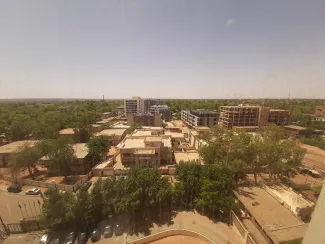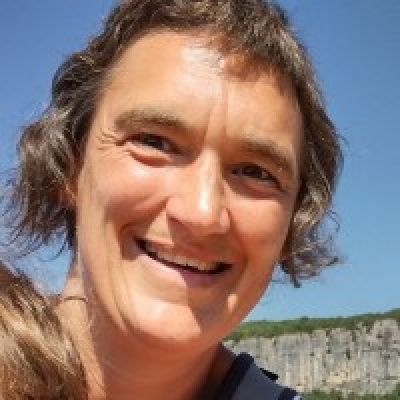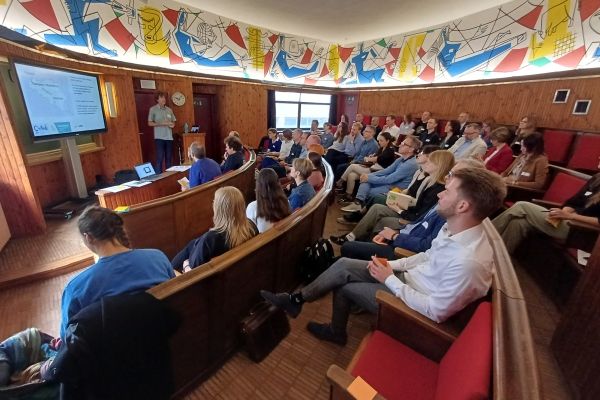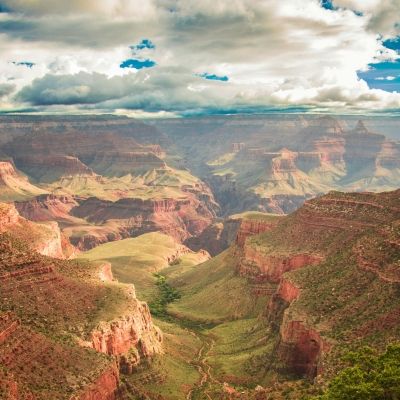Urban greenery can bring cooling in unbearably hot Niamey
Niamey, the capital of Niger, is one of the hottest cities on Earth. Urban greenery can help relieve heat stress, which is rising by global warming. Together with local partners and volunteers, VITO is mapping out how many thousands of urban trees will mitigate the increasing heat in the city, whose population is expected to grow explosively in the coming decades.
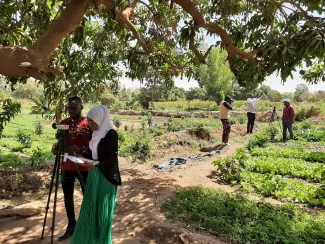
Three times as many trees in the city; 300,000 instead of the current 100,000, is the ultimate goal of the city of Niamey, the capital of Niger. The city authorities hope this will provide residents with better protection against heat stress, which is becoming more acute due to global warming. The Niamey Climate Forest project was set up to provide a scientific basis for this form of climate adaptation, and support Niamey’s ambition on the basis of solid evidence. This project is being conducted by VITO in collaboration with the city authorities, the African Centre of Meteorological Applications for Development (ACMAD), and the Flemish climate consultancy company CO2logic. The project is one of the first to be financed by the Government of Flanders through the G-STIC Climate Action Programme. This initiative was launched in 2021 to support developing countries in their fight against global warming.
Digital dashboard with climate information
Just like a recent monitoring project in Johannesburg (South Africa), VITO is also active in Niger in an African city with more than a million inhabitants. As in South Africa, VITO is again cooperating with local partners and volunteers in Niger, so this project is also an excellent example of citizen science. The partner responsible for coordinating the project in Niamey is ACMAD, a pan-African association of weather services. VITO gained a foothold in the Nigerian capital thanks to this organisation. ‘ACMAD and VITO work in similar areas, which is how we got to know each other,’ says Koen De Ridder of VITO. Both organisations have already worked together on the theme of urban climate in the u-CLIP project. ‘We developed an online digital dashboard with climate information for Niamey as part of this project.’ This project, funded by the Belgian development agency Enabel, ran from April 2021 to March 2023.
When VITO employees were in Niamey in March 2023 for the closing conference of u-CLIP, the temperature reached peaks of 41 °C. ‘And the worst heat was yet to come,’ says Nele Veldeman of VITO. ‘In April and May, the thermometers can register 45 °C.’ It was the dry season during the VITO team’s visit, so the heat was still somewhat bearable. De Ridder: ‘That’s very different in the rainy season. The heat and humidity make it difficult to lose body heat, which can be very dangerous.’ The u-CLIP project mapped out the heat stress, the risks of extreme heat and the heat island effect in the Nigerian capital, with a resolution of two hundred to three hundred metres. A future projection was made using VITO’s climate models. This is particularly worrying for a city like Niamey, as its population is expected to explode. The population, currently more than two million, will reach almost ten million by 2050, so many more people will have to cope with heat stress. For this reason, prompt measures must be taken to make and keep the city somewhat liveable, not least in terms of climate.
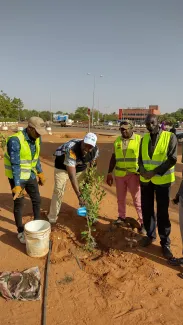
Enter Toudjani Hassoumi, an agricultural engineer linked to the city of Niamey, who studied in Belgium at Gembloux Agro-Bio Tech. In addition to considerable entrepreneurial spirit, Hassoumi has green fingers. For many years now, he has been trying to cool his city with urban greenery, especially trees. As part of the city’s major tree-planting plan, he grows trees. These are planted in strategic spots or distributed to residents who are taught how to look after them. After he came into contact with VITO via u-CLIP, a new collaboration was the obvious next step. He came up with the idea of the Niamey Climate Forest project. Its objective is to provide evidence-based support on the importance of urban green spaces as an adaptation measure against heat stress, and as such create leverage for the massive planting of trees. This initiative, which started in January 2022 and will run until mid-2024, couldn’t have a more appropriate name.
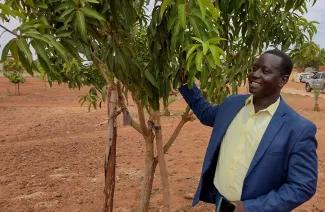
Scientific basis
The project will further map the heat stress in Niamey, with the overriding aim of a much higher level of detail. The resolution will be refined to one metre, the scale of individual houses and trees. The results will be entered into an urban climate model, which can then be used to demonstrate the mitigating impact of urban greenery on the consequences of global warming, especially heat stress. ‘This effect is already well known,’ adds De Ridder. ‘But it is important that this is demonstrated according to a solid scientific basis. This helps convince policymakers, especially in countries where people are not yet very familiar with the use of urban greenery as a climate-adaptation measure.’
VITO first modelled three urban districts of Niamey, each with a different type of urban greenery. A KU Leuven student doing an internship at VITO helped with this. She used open source geographic data (from OpenStreetMaps) and some GIS applications to make the city maps for the modelling. The high level of detail meant that she was also able to include elements such as the height and contours of houses, buildings and trees alongside the streets. VITO employees also plan to extend the modelling to the entire city in a possible follow-up initiative, although this will preferably be done automatically and not, as is currently the case, manually. At VITO, a PhD student from Ghent University is currently looking into whether this could be possible on the basis of open source data, and if so how.
As mentioned, Niamey Climate Forest is a citizen science project. A group of volunteers has therefore been asked to repeat what was done in Johannesburg and measure the wet bulb globe temperature (WBGT) in three city districts. The WBGT is a measure of the heat stress, which takes into account temperature, humidity, and solar radiation. The results of the measurement campaigns will soon be used to validate the results of the modelling. The volunteers are using the same measuring equipment that was used in Johannesburg. In addition, sensors are being used to measure soil moisture (the same soil moisture and temperature probes used in ‘CurieuzeNeuzen in de Tuin’, the Belgian citizen science study into drought and heat), and thermal cameras are mapping the impact of the shadows of city trees on temperatures.
Besides the modelling, sharing information is another important aspect of the project. ‘We intend to translate the scientific material we produce, such as the measurements and model results, into accessible information about heat stress and the role that urban green can play in climate adaptation,’ says Veldeman. ‘You could describe it as means of building capacity in the field of the climate and climate adaptation.’ ACMAD has been asked to share this information, which will involve organising workshops in Niamey on subjects such as the maintenance of urban greenery, and developing specific programmes for schools, among other things.
Capacity is being built in two ways. Thanks to the collaboration with ACMAD and the city council of Niamey, VITO can gain easier access to international climate support programmes. Veldeman: ‘The initiative for the projects in these programmes has to come from the countries for which they are intended. We’re now on the radar of a growing number of organisations from developing countries as a potential expert partner.’
Lastly, the project will examine whether the newly planted urban greenery in Niamey can be considered for carbon offsetting initiatives, in which companies compensate their greenhouse gas emissions by sponsoring plantings. This is where climate consultant CO2logic comes in. ‘It has to be remembered that strict conditions are attached to this. Among other things, adequate maintenance of the greenery planted is closely monitored. If everything is in order, the carbon storage capacity of urban green spaces in developing countries can qualify for carbon credits. Hopefully, the proceeds can then help with the maintenance of greenery,’ says Veldeman.
